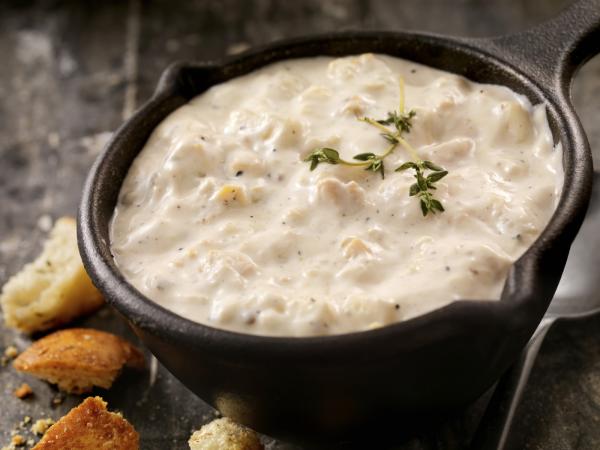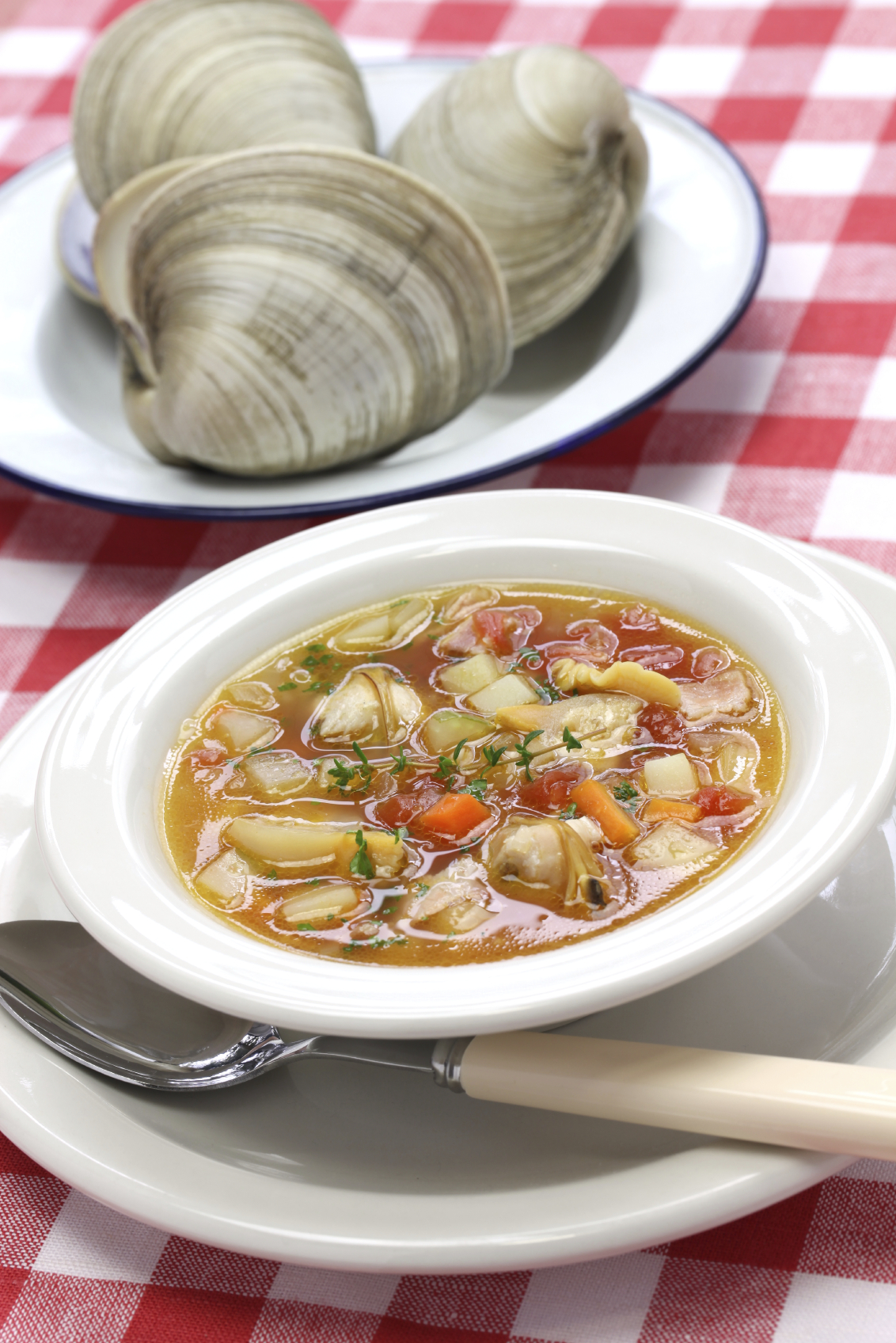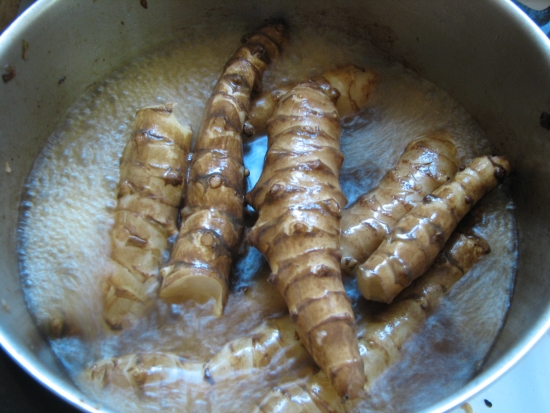Native Cooking: Is It Chowder, or Chowdah?

No matter how you say it or spell it, chowder, is still one of my favorite foods. In Rhode Island, where I grew up, the chowder is thin, basically clams and their broth with onion and, maybe some potatoes or Jerusalem artichokes*. This is the way the Wampanoag have made it for eons. My family, Abenaki and Canadian French, made it this way for years, and we thought that this was the only way to have it—with a pure and strong clam flavor.
My mother had many Wampanoag friends. The Wampanoag live on Cape Cod in and around Mashpee and on Martha’s Vineyard at Aquinnah. We spent some summers in Mashpee, Falmouth, Wellfleet and other Cape Cod towns. Traveling around New England there seemed to be chowder wars everywhere. Is it thick enough to stand a spoon up in? Do they use milk or cream? Are there too many potatoes and not enough clams? I believe this war is still going on—and it isn’t just broth or creaminess, Manhattan clam chowder contains what? Tomatoes! And some even has spicy sausage like chirozo or Italian hot or sweet.

A chowder doesn’t have to contain clams. Fish chowder is pretty delicious, hearty and filling. I use cod or flounder if possible, a bit of lobster wouldn’t hurt, lots of onion and potato plus a crumble of cooked bacon, but this had to change as people started to be aware of their allergies, namely lactose intolerance so I had to rethink it by leaving out the milk or cream I used (not very Native), but I did come up with a chicken broth base recipe that is heavy on the herbs, and has became requested more than the cream version.
But, I digress. Good clam chowder can be easy to make as long as you don’t overthink it. Just remember there are three kinds of chowder: Rhode Island, New England and Manhattan.
Clam Chowder
1 pint clams, shelled, chopped quahogs, littlenecks, cherrystones or all
2 medium onions, chopped
5-6 large white potatoes, peeled and ½-inch cubed
2 stalks celery, chopped
2 quarts clam broth
2 tablespoons butter
2 strips cooked bacon, set aside to crumble later
½ cup flour to thicken if necessary
1 teaspoon of each: sea salt, black pepper, Old Bay seasoning, parsley, thyme
Cook bacon, set aside. Melt butter and cook the onions and celery until onions are translucent.
Using a large soup pot, cook the cubed potatoes in the clam broth for a half hour. Reduce heat and add clams, celery, onion, flour if needed to thicken, and herbs. Crumble bacon into chowder. Let all simmer very low for awhile. Give chowder a taste test, adjust and add more flour and herbs, maybe some milk or cream. Not necessary but adds richness.
Rhode Island Style Clam Chowder
2 dozen quahogs (about 2-3 pints) plus juice, rough chopped
2 quarts clam juice in addition to above
1 large onion (I prefer Vidalia), chopped
3 large white potatoes, diced in ½-inch cubes
¼ pound salt pork or ½-stick butter
½ cup flour (incorporate in cold clam juice before adding to pot)
Season lightly with salt and pepper, cream or milk to taste (the less the better)
Saute chopped onions in salt pork or butter until translucent. Cook potatoes in clam juice until somewhat soft. Add clams and remaining ingredients, and simmer gently. The chowder will be thin with a good strong clam flavored broth.
Notes
The word “chowder” came from the French la chaudie’re, which is an enormous copper pot used in coastal villages. A custom was for returning fishermen to toss part of their catch into the pot for the community for a feast. This name, or corruption thereof came to New England by way of French Canada and the Maritimes.
*Jerusalem artichokes are wild variety of sunflower that are prolific throughout Indian country. They can be substituted for potatoes, which as we know them today had not reached New England when the coastal Abenaki, Wampanoag, Narragansetts and others were creating these chowders. Potatoes began their journey in Peru and Central America. The Spanish took them, as well as other things, to Europe. Potatoes came back to America via the English and Irish in the 16th century. They were established in the American southwest and Midwest but had not yet reached New England.

Dale Carson, Abenaki, is the author of three books: “New Native American Cooking,” “Native New England Cooking” and “A Dreamcatcher Book.” She has written about and demonstrated Native cooking techniques for more than 30 years. Dale has four grown children and lives with her husband in Madison, Connecticut.
Read more at http://indiancountrytodaymedianetwork.com/2015/06/30/native-cooking-it-chowder-or-chowdah-160695